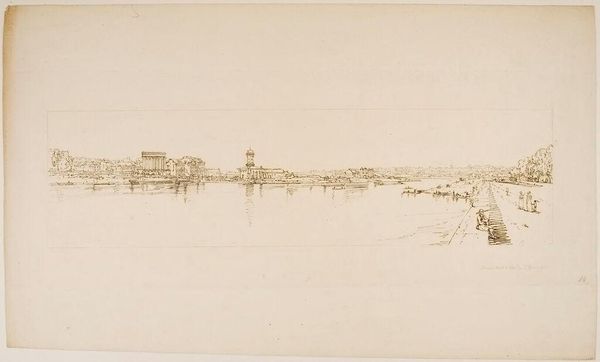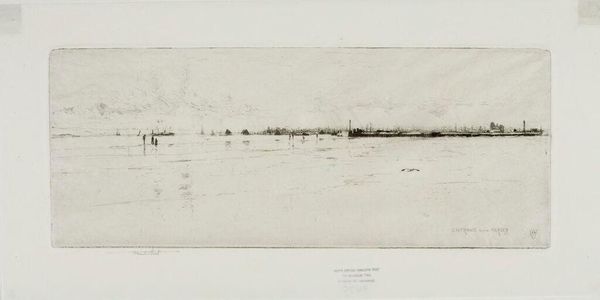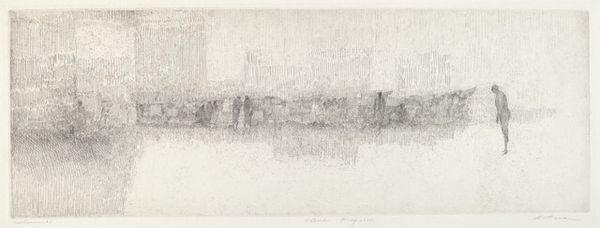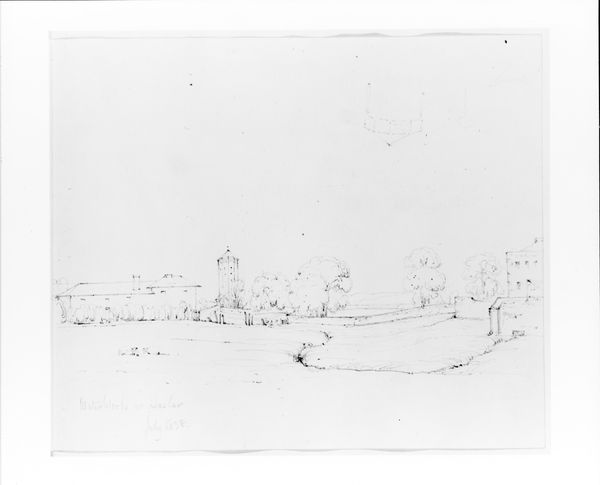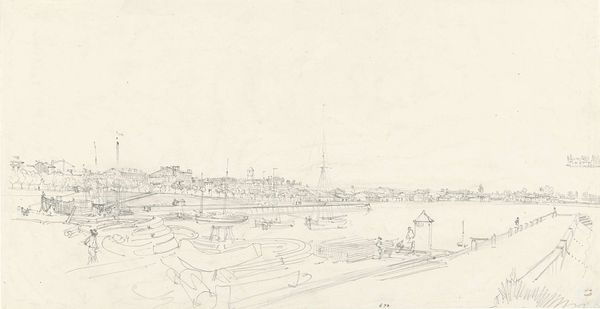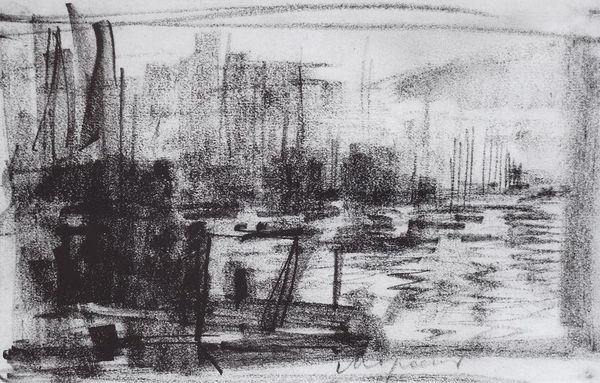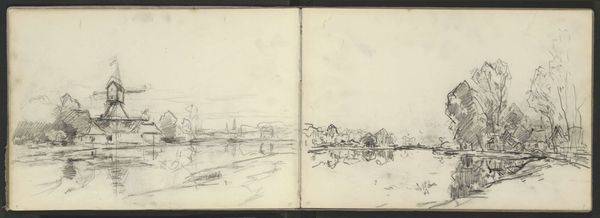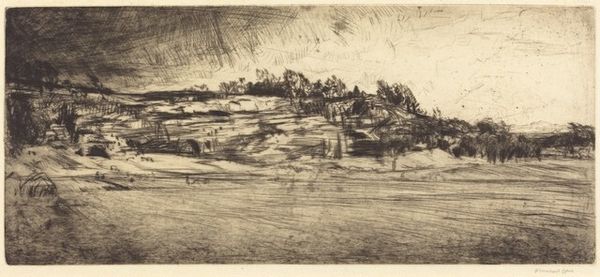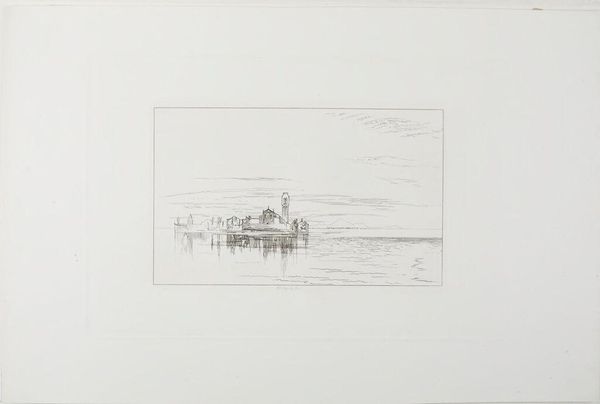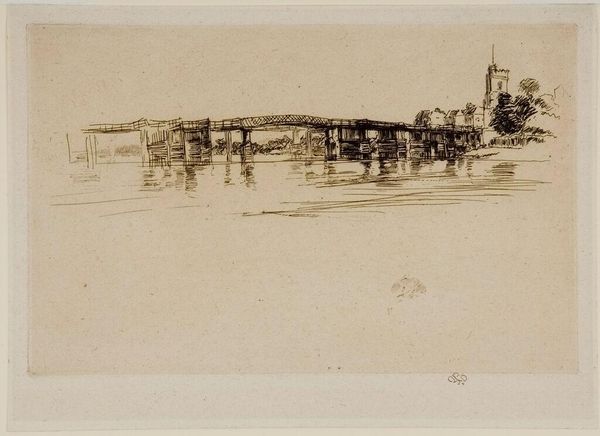
Dimensions: 7 1/4 x 11 1/2 in. (18.42 x 29.21 cm) (plate)10 1/4 x 17 13/16 in. (26.04 x 45.24 cm) (sheet)
Copyright: No Copyright - United States
Curator: Before us hangs Childe Hassam’s lithograph, "Innes Harbor," created around 1916. It presents a cityscape reflected in calm water, a scene imbued with the atmospheric perspective characteristic of Impressionism. Editor: It feels very preliminary, like a study, or perhaps a quick sketch before a larger work. I'm struck by the texture of the paper and the stark contrast of ink—there’s an immediate sense of light reflecting off water. Curator: It’s interesting you pick up on that contrast. Hassam, despite aligning with Impressionism, consistently used lithography and other printmaking processes to reproduce and, perhaps, democratize his art for a broader audience. Look closely, and you’ll see the cityscape mirrors traditional symbols of safety, the home and hearth, reflected in an image that ripples away. Editor: Yes, that reproduction element is key! It's less about capturing a singular, precious moment, and more about dissemination, allowing this imagery— this safe harbor you mention—to enter more homes, exist as multiple originals. Curator: Indeed! And within the seeming simplicity lies a complex encoding. Harbor symbols recur throughout cultures, each representing a connection between physical security and spiritual arrival. The impressionistic interpretation blurs it into the individual human consciousness through visual shorthand. Editor: So, it's not merely a harbor; it is _the_ harbor, an idea manifested, repeated, available. The very process becomes a symbolic act, mirroring the cyclical nature of maritime trade and the daily life of the people dependent on it. What's amazing here is how humble materials - ink on paper - articulate profound ideas. Curator: Exactly, an everyday symbol transcending mere representation to engage cultural memory itself. Editor: I came in ready to see something light and transient but found a complex understanding of place through process and meaning. Curator: Just so. Hassam managed to take an impression and inscribe something very permanent within our memory.
Comments
No comments
Be the first to comment and join the conversation on the ultimate creative platform.
